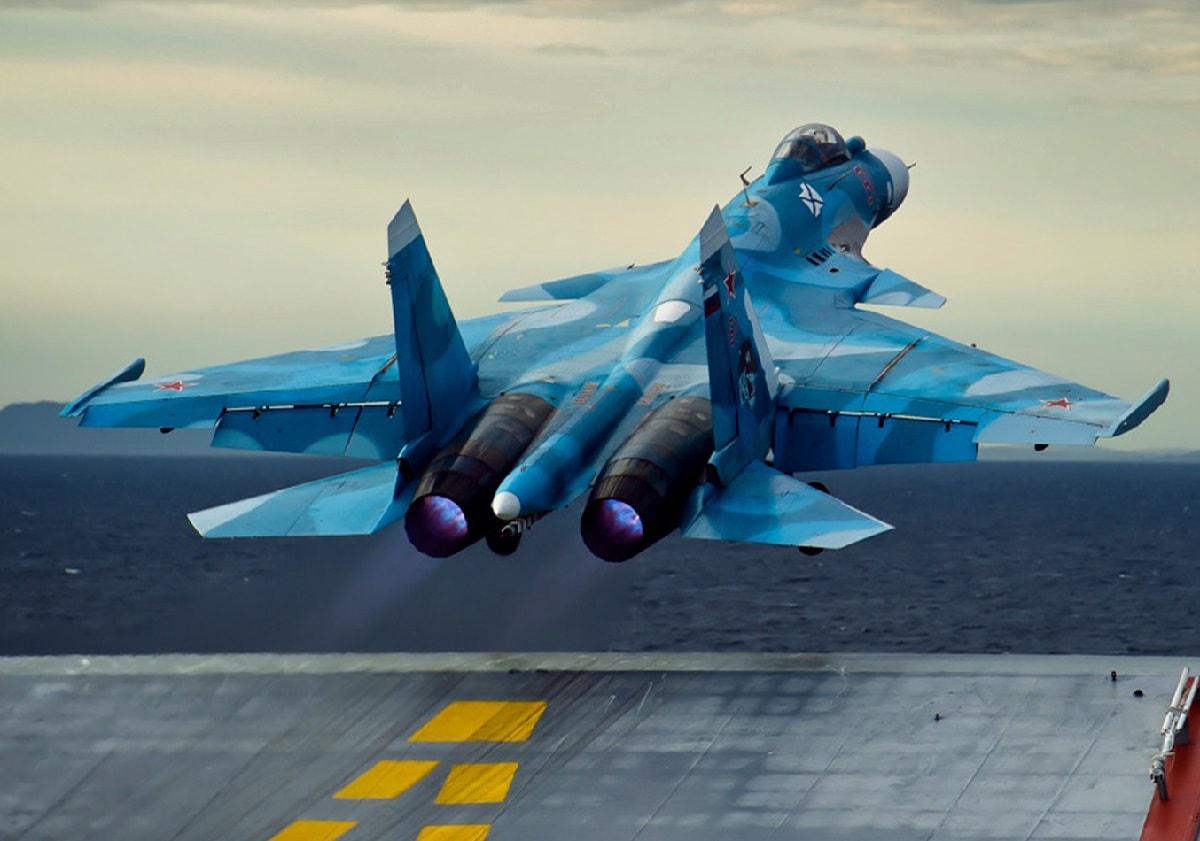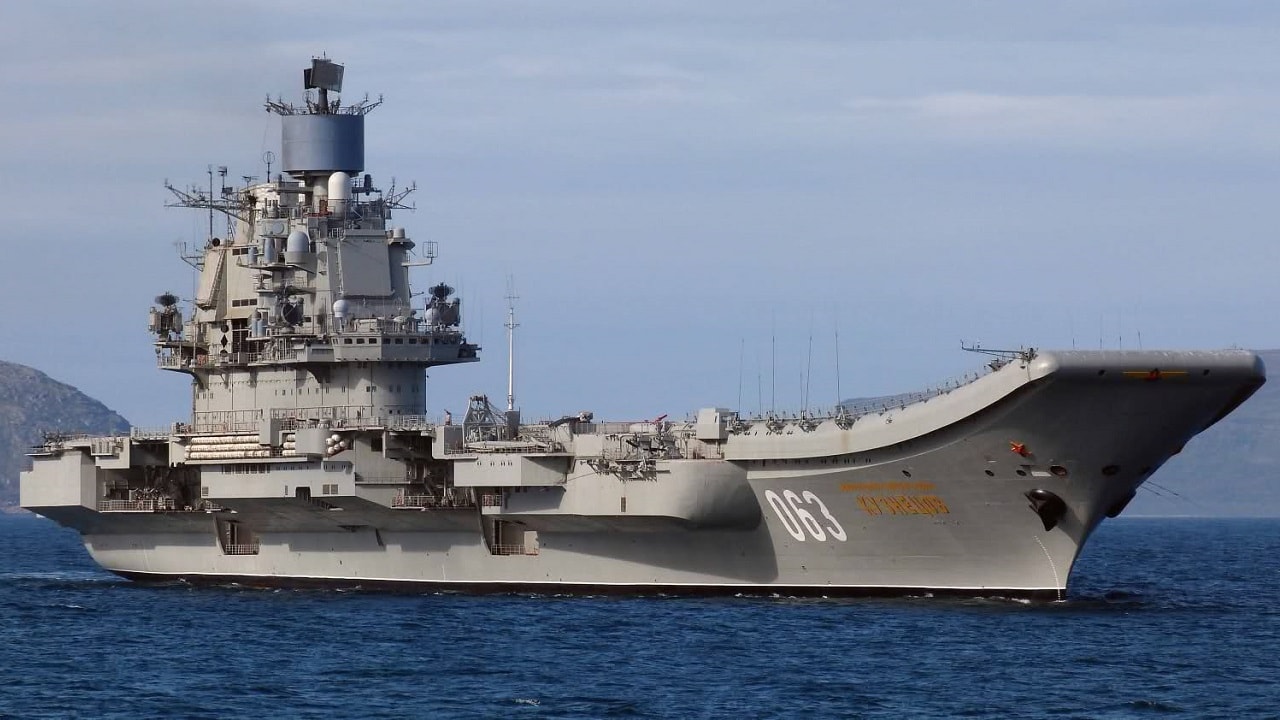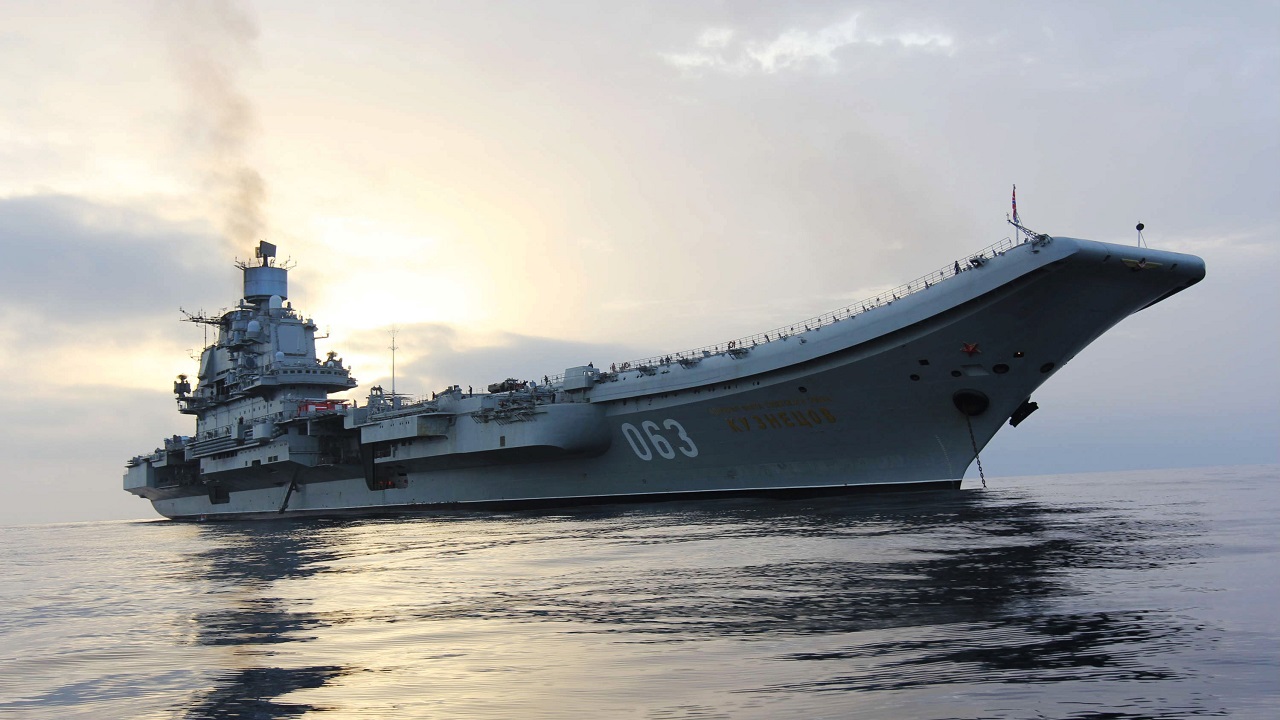Black Smoke: Russia’s sole aircraft carrier, Admiral Kuznetsov, has faced chronic issues tied to its outdated mazut-fueled propulsion system. Mazut, a thick and tarry fuel, creates visible black smoke plumes, exposing the carrier’s location and affecting operational effectiveness.
-The system’s complexity requires constant maintenance and has led to breakdowns, including a total power loss in 2012 that required a tow back to port.
-The mazut system’s inefficiency, coupled with the carrier’s aging design, has led to frequent operational pauses.
-Even if the carrier returns to service, its outdated engines and other systemic flaws suggest ongoing operational and maintenance challenges.
The Black Smoke Trail: How Mazut Plagues Russia’s Aircraft Carrier
The unfortunate saga of Russia’s only aircraft carrier has been a trail of tears with fatal accidents along the way. Admiral Kuznetsov has been on an indefinite operational pause to upgrade systems and fix damages in port.
There is a good chance the carrier will never patrol the high seas again. This cursed bucket of bolts also looks like it is on fire when it steams far from Russian shores.
The ship spews out a thick, black smoke plume, which makes observers think it could sink at any moment.
Let’s examine why this ship looks like something from World War Two.
What Is Mazut?
Admiral Kuznetsov is not nuclear-powered, and the Russians are certainly behind the times without a modern propulsion system that allows other advanced carriers to circumnavigate the globe.
Instead, the Admiral Kuznetsov depends on a curious fuel called mazut. Mazut is a thick, tarry substance that produces dirty, stinky, and heavy black smoke.
As the aircraft carrier limps along, it is trailed by a storm cloud from its engines. This is shocking to sailors from enemy navies and makes the carrier easy to spot.

Russia’s Admiral Kuznetsov
What a Mess
Once mazut gets on a uniform, there is no getting it off.
This is bound to minimize a sailor’s morale since he is always covered in the smelly and sticky fuel.
Decades ago, petrochemicals were popular fuels for military and civilian ships. But those days are gone, and the Russian navy shows that it is behind the times.
One good thing about mazut is that it has a decent volume-to-energy ratio, which means a little bit can go a long way.
However, the downsides of the tarry substance that produces the black smoke gave way to nuclear-fueled and gas-turbine propulsion systems that allowed ships to be powered without disclosing locations with a smoke trail.
Numerous Pipes and Boilers Are Needed
When ships use mazut, they require a complex system of pipes and boilers that need constant supervision and maintenance.
The mazut system is another reason the Admiral Kuznetsov is so often out of action.

Admiral Kuznetsov Aircraft Carrier. Image Credit: Creative Commons.
During the engine fitting period of the early 1980s, the Soviets had trouble with the mazut-fueled power plant, so the ship was destined for hiccups and down periods.
The designers and engineers should have recognized this was a fatal choice and stopped construction on the carrier until modern engines were installed. But the pressures of meeting production deadlines and quotas, and probably the old Soviet habit of lying about delivery times, allowed the mazut-fueled power plant to proceed.
How Is This Fuel Classified?
Mazut is classified as a “Bunker B or Bunker C” fuel. These classifications are dependent on “boiling points, carbon-chain lengths, and viscosities,” as National Interest noted.
“C” is the least favorable composition. This type of fuel releases sulfur into the air like a heavy, sour oil grade. This makes it dangerous to ingest and wreaks havoc on the environment.
Kuznetsov came on the scene in 1985, and Mazut hadn’t been used much by other military vessels for 20 years, so the ailing sub was obsolete before it launched. No new ship would be dared to be powered by Mazut these days.
Tow Boats Are Needed in Case the Engines Die on this Aircraft Carrier
The faulty boiler system led to an embarrassment in 2012. The Kuznetsov was steaming off the coast of Syria when it completely lost power. The carrier was dead in the water and had to be towed back to port. The mazut system was the culprit. This convinced the Russian naval high command to always send a tow boat in case the Admiral Kuznetsov died again.
When boilers break down, the ship can only travel at four knots, which is unacceptable. The sailors must then make a difficult choice. Either the boiler system is shut down completely, which kills the mission, or they alternate boilers, which creates lower power levels and slow speed.

Admiral Kuznetsov Aircraft Carrier from Russia. Image Credit: Creative Commons.
As you can see, the mazut-fueled engines have been a disaster and have only complicated the history of the Admrial Kuznetsov.
The ship was born under a bad sign. It would be understandable if the only thing wrong with the fuel were that it stuck to clothing, but it could barely power the ship. This adds insult to injury. Plus, with the thick black smoke from the Kuznetsov, the vessel can be easily spotted. This adds to the dangers and risks of the entire aircraft carrier strike group.
Moreover, the maintenance periods are lengthy and labor-intensive. The mazut has caused significant trouble over the years, and even if Admiral Kuznetsov sails again, it will probably be headed for more breakdowns.
About the Author: Dr. Brent M. Eastwood
Brent M. Eastwood, PhD, is the author of Don’t Turn Your Back On the World: a Conservative Foreign Policy and Humans, Machines, and Data: Future Trends in Warfare, plus two other books. Brent was the founder and CEO of a tech firm that predicted world events using artificial intelligence. He served as a legislative fellow for U.S. Senator Tim Scott and advised the senator on defense and foreign policy issues. He has taught at American University, George Washington University, and George Mason University. Brent is a former U.S. Army Infantry officer. He can be followed on X @BMEastwood.

